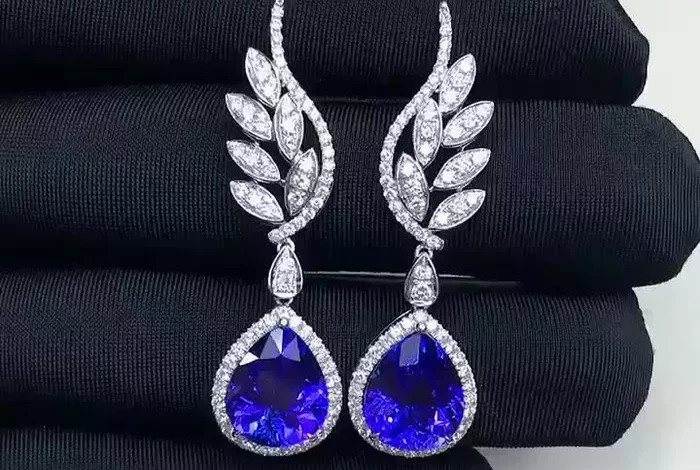Tanzanite is a captivating gemstone known for its vibrant blue-violet hues and unique properties. As an experienced gemologist, understanding the hardness of tanzanite is essential for both collectors and jewelers. This article will explore how tanzanite ranks on the Mohs scale of hardness, its implications for durability, care, and its overall value in the gemstone market.
What is the Mohs Scale of Hardness?
The Mohs scale of hardness is a qualitative scale used to measure the scratch resistance of various minerals through the ability of harder materials to scratch softer ones. Developed in 1812 by German mineralogist Friedrich Mohs, this scale ranges from 1 to 10, with talc rated as 1 (the softest) and diamond rated as 10 (the hardest).
Understanding Tanzanite’s Hardness
Tanzanite ranks between **6 and 7** on the Mohs scale. This places it in the medium-hard category among gemstones. For comparison:
6: The hardness of orthoclase (feldspar).
7: The hardness of quartz.
This means that while tanzanite is relatively durable, it is softer than many popular gemstones like sapphire (9) and ruby (9), but harder than others like amethyst (7) and turquoise (5-6).
The Importance of Hardness in Gemstones
The hardness of a gemstone is crucial for several reasons:
Durability: Harder stones are more resistant to scratches and wear, making them suitable for everyday jewelry.
Care Requirements: Softer stones require more careful handling and maintenance to avoid damage.
Value Assessment: Hardness can influence a gemstone’s overall value, though it is not the only factor.
How Tanzanite’s Hardness Affects Its Use
Given its ranking on the Mohs scale, tanzanite requires a bit more care than harder gemstones. Here are some key considerations:
Jewelry Design: When designing jewelry with tanzanite, jewelers often choose protective settings to minimize exposure to potential scratches.
Everyday Wear: While tanzanite can be worn daily, it is advisable to avoid activities that may lead to impact or abrasion.
Cleaning Practices: Gentle cleaning methods are recommended. Avoid harsh chemicals and ultrasonic cleaners that could damage the stone.
Comparing Tanzanite with Other Gemstones
To better understand where tanzanite stands in terms of hardness, here’s a comparison with other popular gemstones:
| Gemstone | Mohs Hardness |
|---|---|
| Diamond | 10 |
| Sapphire | 9 |
| Ruby | 9 |
| Tanzanite | 6-7 |
| Amethyst | 7 |
| Emerald | 7.5-8 |
| Turquoise | 5-6 |
This table illustrates that while tanzanite is not as hard as diamonds or sapphires, it still holds its own among many other gemstones.
Factors Influencing Tanzanite’s Value
While hardness plays a role in determining value, other factors are equally important:
Color: The most sought-after tanzanites exhibit deep blue-violet colors with strong saturation.
Clarity: Stones with fewer inclusions are generally more valuable.
Cut Quality: A well-cut stone enhances brilliance and overall appearance.
Carat Weight: Larger stones tend to be rarer and thus more valuable.
See Also: Yellow Tanzanite vs. Blue Tanzanite
The Unique Characteristics of Tanzanite
Tanzanite is not just defined by its hardness; it possesses several unique characteristics that contribute to its desirability:
Trichroism: This phenomenon allows tanzanite to display different colors when viewed from different angles—blue, violet, and burgundy.
Rarity: Found exclusively in Tanzania, tanzanite is about 1,000 times rarer than diamonds, adding to its allure.
Cultural Significance: As December’s birthstone, tanzanite carries special meaning for those born in this month.
Caring for Tanzanite Jewelry
Given its moderate hardness, proper care is essential for maintaining the beauty of tanzanite:
Storage: Store tanzanite jewelry separately from harder gemstones to prevent scratches.
Cleaning: Use warm soapy water and a soft cloth for cleaning. Avoid harsh chemicals that could damage the stone.
Regular Inspections: Have your jewelry inspected regularly by a professional to ensure settings remain secure and stones are free from damage.
Conclusion
Tanzanite ranks between 6 and 7 on the Mohs scale of hardness, making it a medium-hard gemstone that requires careful handling but offers stunning beauty. Its unique color properties, rarity, and cultural significance enhance its appeal among collectors and jewelers alike. By understanding tanzanite’s hardness and following proper care guidelines, enthusiasts can enjoy this remarkable gemstone for years to come.
In summary:
Tanzanite’s hardness makes it suitable for jewelry but requires caution.
Its unique characteristics set it apart from other gemstones.
Proper care ensures longevity and maintains its stunning appearance.
By appreciating both the beauty and fragility of tanzanite, one can fully enjoy this enchanting gem while ensuring its preservation for future generations.
Related topics:
- Creating Custom Tanzanite Jewelry: A Step-by-Step Guide
- Tanzanite Belly Rings: How to Choose the Perfect Design
- How to Choose the Best Tanzanite Earrings to Match Your Face Shape


